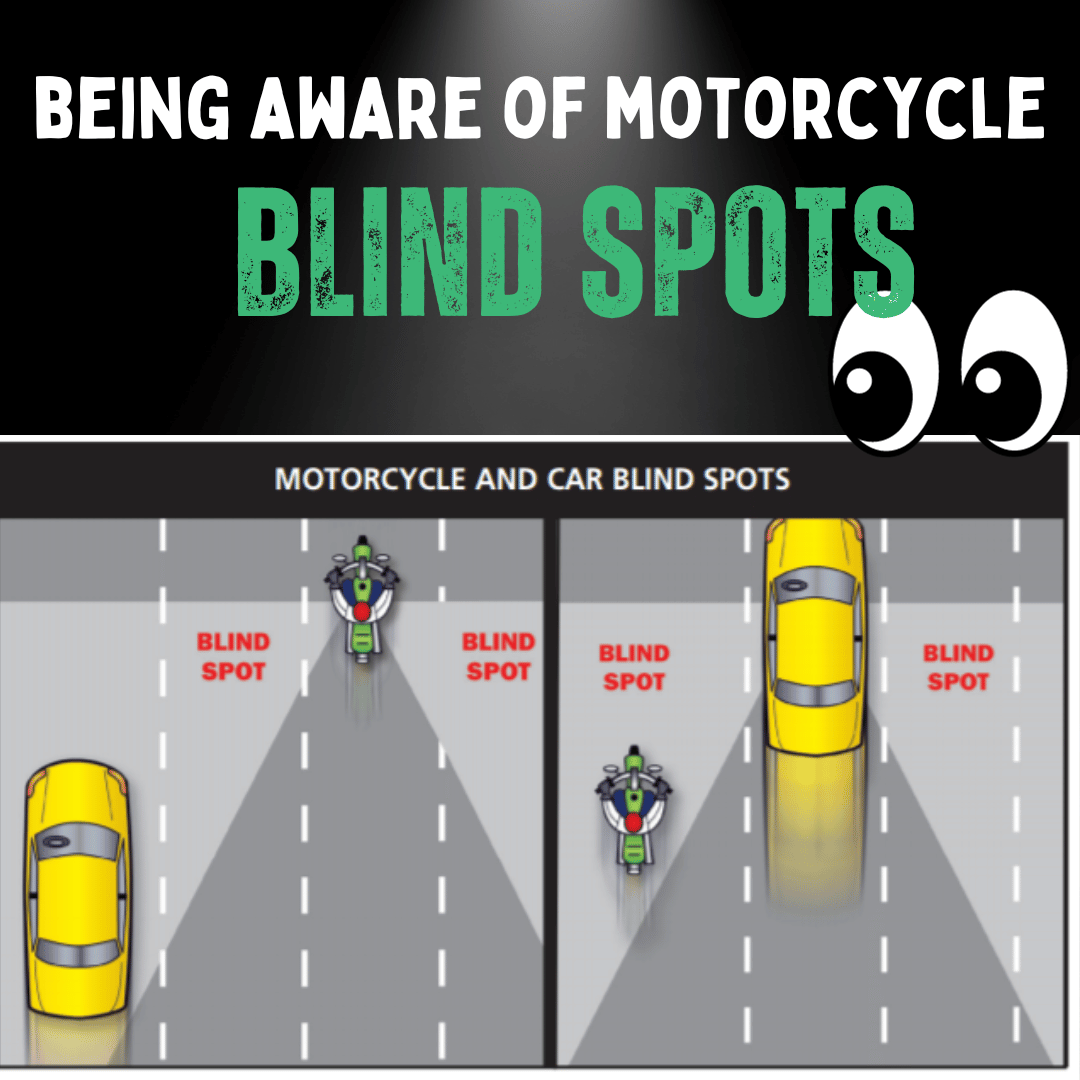
Updated: 17.4.25
There’s nothing quite like hitting the open road on a motorcycle—the freedom, the rush, the connection with the world around you. But with all that freedom comes serious responsibility, especially when it comes to blind spots.
To avoid dangerous encounters and stay in control, here are five expert tips to help you stay visible, ride smart, and avoid becoming a blind spot casualty.
| Main Tips for Avoiding Motorcycle Blind Spots |
|---|
| Maintain a Safety Buffer: Keep distance around your bike to reduce the chance of hiding in someone’s blind spot. |
| Avoid Lingering in Blind Spots: Ride ahead or behind vehicles—not beside them—for optimal visibility. |
| Assume You're Invisible: Defensive riding starts by assuming other drivers don’t see you. |
| Use Shoulder Checks Often: Mirrors aren’t enough—turn your head to check blind spots manually. |
| Leverage Tech & Reflective Gear: Blind spot monitors and high-vis clothing improve your chances of being seen. |
1. Maintain a Safety Buffer
Always keep a safety buffer around your bike. Avoid tailgating, and steer clear of riding directly beside other vehicles for extended periods.
Why It Matters:
High-speed roads and congested city streets increase the risk of getting lost in someone’s blind spot. Space gives you reaction time and helps others see you.
2. Avoid Other Vehicles’ Blind Spots
Ride either slightly ahead of or behind vehicles—not directly beside them. This is especially important around large vehicles like trucks and buses, which have larger blind spots.
Pro Tip:
If you can’t see the driver’s face in their mirror, assume they can’t see you either.
3. Ride Defensively: Assume They Don’t See You
One of the best habits you can adopt is treating every driver like they haven’t noticed you.
Stay Alert:
Practice defensive riding by anticipating others’ moves. Be ready to slow down or move over. Assume the worst so you’re always ready to react.
Related: 10 CRUCIAL Tips on How to Be Seen on a Motorcycle
4. Shoulder Checks: Look Before You Move
Mirrors are great, but they don’t show the whole picture. A quick glance over your shoulder can reveal vehicles hiding where mirrors can’t reach.
Make it Habitual:
Look over your shoulder before lane changes or turns—every time. With practice, it becomes second nature and could prevent a life-altering mistake.
5. Embrace Visibility Tech & High-Vis Gear
Use every tool at your disposal—blind spot detection systems, reflective jackets, and daytime running lights—to stay visible and safe.
Smart Gear Can Help:
- Install aftermarket blind spot monitors
- Use smart helmets with rearview displays
- Wear reflective vests and decals
Conclusion
Blind spots are a silent threat for every rider. But with a few key habits—like creating space, staying visible, checking your shoulder, and wearing the right gear—you can stay ahead of danger and ride with confidence.
Every move you make on the road counts. Be sharp, be seen, and ride safe.
FAQs
How can I stay out of blind spots?
Ride ahead or behind vehicles—not beside them. Make sure you’re visible in other drivers’ mirrors, and avoid lingering in any one position.
What should I wear to be more visible?
Opt for brightly coloured or reflective jackets, helmets, and gloves. Reflective decals on your bike can also help in low-light conditions.
Is it okay to rely on tech like blind spot detectors?
Tech helps, but it doesn’t replace safe riding habits. Use gadgets as a supplement, not a substitute for awareness.
Are trucks and buses more dangerous for blind spots?
Yes. The bigger the vehicle, the larger its blind spot. Always pass quickly and avoid riding directly beside them.
Need More Riding Tips?
Check out our full blog at RiiRoo.com for everything from safety guides to gear picks. Or visit our live chat if you’ve got questions!





Share:
How To Mix 2 Stroke Fuel For Your Quad Bike (5 SIMPLE STEPS)
How to Choose the Right Air Filter for Your Motorcycle